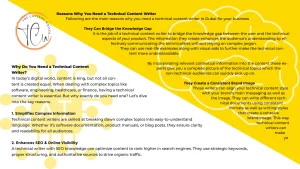A user-friendly website is one that provides a satisfying experience for your visitors. It is simple to use, explore, and comprehend. It is also fast, responsive, and accessible. A user-friendly website can help you attract more traffic, increase conversions, and build trust and loyalty with your audience.
But how do you create a user-friendly website? What are the best practices and principles while designing a user-friendly website? In this blog, we will share with you 10 valuable tips for crafting a user-friendly website that will make your visitors happy and engaged.
Table of Contents:
Tip 1: Clear Navigation
- How clear navigation improves user experience and satisfaction
- How to create clear and intuitive navigation for your website
Tip 2: Mobile Responsiveness
- How mobile responsiveness affects your website’s performance and ranking
- How to ensure your website is mobile-friendly and responsive
Tip 3: Fast Loading Speed
- How loading speed influences user retention and conversion
- How to optimize your website’s loading speed and reduce bounce rate
Tip 4: Effective Content Organization
- How content organization enhances the clarity and impact of your message
- How to organize your content effectively and strategically
Tip 5: Readable Typography
- How typography engages and influences your audience
- How to choose and apply readable typography for your website
Tip 6: Intuitive Forms and Input Fields
- How intuitive forms simplify user interactions and increase conversions
- How to design user-friendly forms and input fields for your website
Tip 7: Visual Appeal and Consistency
- How visual appeal and consistency create a positive impression and trust
- How to create an aesthetically pleasing and cohesive website design
Conclusion
- The ongoing journey of creating a user-friendly website
- How we can assist you in crafting user-friendly content for your website
Importance of User-Friendly Websites
User-friendliness is not just a nice-to-have feature for your website. It is a must-have requirement that can make or break your online success. According to a study by Google, 61% of users are unlikely to return to a mobile site they had trouble accessing, and 40% visit a competitor’s site instead. Another study by Adobe found that 38% of people will stop engaging with a website if the content or layout is unattractive.
User-friendliness is also closely related to user experience (UX), which is how users feel when they interact with your website. UX affects various aspects of your online performance, such as:
SEO: User-friendliness can improve your website’s ranking on search engines, as Google considers factors like mobile-friendliness, loading speed, and dwell time in its algorithm.
Conversion: User-friendliness can increase your website’s conversion rate, as users are more likely to take action if they find your website easy and pleasant to use.
Reputation: User-friendliness can enhance your website’s reputation, as users are more likely to trust and recommend your website if they have a positive experience with it.
Therefore, creating a user-friendly website is not only beneficial for your users but also for your business.
Clear Navigation
Navigation is the method users use to explore your website and locate what they need. Clear navigation means that your website has a logical and intuitive structure that allows users to easily access the information they need.
Some of the best practices for creating clear navigation are:
- Use clear and consistent names in your menu.
- Provide a search function for users who want to find something specific
- Use breadcrumbs to help users see where they are in relation to the homepage.
- Include a sitemap to help users see the overall layout of your website
- Avoid using too many levels of submenus or dropdowns that can confuse or frustrate users
Mobile Responsiveness
Mobile responsiveness means that your website adapts to the screen size and device of the user, whether it is a smartphone, tablet, or desktop. A mobile-responsive website ensures that your content and design are displayed properly and optimally on any device.
Some of the benefits of having a mobile-responsive website are:
- It improves your SEO, as Google favors mobile-friendly websites in its search results
- It increases your traffic, as more and more users access the internet from their mobile devices
- It boosts your conversion, as users are more likely to buy from a mobile-friendly website than from one that is not
Some of the tips for making your website mobile-responsive are:
- Use adjustable layouts that can adapt to different screen sizes
- Use responsive images that can scale and fit different screen resolutions
- Media queries can be used to apply different styles depending on the device’s characteristics.
- Use touch-friendly elements that can be easily tapped or swiped
- To ensure compatibility, test your website on a variety of devices and browsers.
Fast Loading Speed
A user-friendly website is also a fast-loading website. Loading speed is how quickly your website loads on the user’s device. Loading speed is important because it affects the user’s perception of your website and their willingness to stay on it. Google research shows that 53% of mobile users abandon a website if it takes longer than 3 seconds to load. A slow-loading website can also hurt your SEO, as Google considers loading speed as a ranking factor.
Some of the ways to improve your loading speed are:
- Optimize your images by compressing them or using web-friendly formats
- Shrink your code by stripping away any spaces, comments, or characters that are superfluous
- Enable caching by storing some of your files on the user’s browser
- Use a content delivery network (CDN) by distributing your files across multiple servers
- Reduce the number of HTTP requests by combining or eliminating some of your files
Effective Content Organization
Content organization is how you arrange and present your content on your website. Effective content organization means that your content is clear, concise, and relevant to the user’s needs and expectations. Effective content organization can help you communicate your message, guide your user’s attention, and persuade your user to take action.
Some of the techniques for effective content organization are:
- Use headers and subheaders to structure your content into more manageable sections.
- Use bullet points and lists to emphasize key points or steps.
- Use white space and contrast to create a visual hierarchy and balance
- Use images and videos to support or illustrate your content
- Use call-to-action (CTA) buttons to direct your user to the next step
Readable Typography
Typography is the skill and practice of presenting and organizing text on your website. Readable typography means that your text is easy to read and understand by the user. Readable typography can enhance your content, convey your tone and personality, and influence your user’s emotions and actions.
Some of the factors that affect readable typography are:
Font: Choose a font that is legible, appropriate, and consistent with your brand identity
Size: Choose a font size that is comfortable and suitable for different devices and screen resolutions
Color: Choose a font color that contrasts well with the background color and matches your design theme
Alignment: Choose an alignment that aligns with your content and layout
Spacing: Choose a spacing that creates enough breathing room and avoids clutter
Intuitive Forms and Input Fields
Forms and input fields are the elements that allow users to enter or submit information on your website. Intuitive forms and input fields mean that they are easy to use, understand, and complete by the user. Intuitive forms and input fields can improve user satisfaction, reduce errors, and increase conversions.
Some of the guidelines for creating intuitive forms and input fields are:
- Use concise and informative labels for each field.
- Use placeholders or tooltips to provide hints or examples
- Use validation and feedback to indicate errors or success
- Use appropriate input types and formats for each field
- Use autocomplete or autofill to save time and effort
Visual Appeal and Consistency
Visual appeal and consistency are the aspects that relate to the overall look and feel of your website. Visual appeal means that your website is attractive, engaging, and pleasing to the eye. Consistency means that your website follows a set of rules and standards that make it coherent, unified, and recognizable.
Some of the elements that contribute to visual appeal and consistency are:
- Color: Choose a color scheme that suits your purpose, mood, and message
- Shape: Choose shapes that complement your content, style, and layout
- Texture: Choose textures that add depth, dimension, and interest to your design
- Icon: Choose icons that are simple, meaningful, and consistent with your theme
- Logo: Choose a logo that is memorable, distinctive, and representative of your brand
Conclusion
Creating a user-friendly website is not a one-time task. It is an ongoing process that requires constant testing, evaluation, and improvement. By following the tips we have shared in this article, you can create a user-friendly website that will delight your visitors and boost your online success.
If you need help with creating user-friendly content for your website, you can contact us at +971 56 644 7213. We are a team of professionals specializing in website content writing services in Dubai. We can help you with writing blogs, articles, web pages, landing pages, product descriptions, newsletters, press releases, social media posts, ebooks, white papers, case studies, infographics, and more.
We have experience in content writing for a website for various industries such as real estate, healthcare, education, tourism, finance, technology, fashion, beauty, lifestyle, and more. We can write in different styles, tones, and formats according to your brand voice.
We also offer SEO services to help you optimize your content for search engines.




